Everyone is talking about Lisa Hanawalt's comics these days. I didn't know anything about her until seeing her mini "Stay Away from other People" which was an instant hit for me. Her drawing is, obviously, amazing. Her comics also appear in Arthur and I hear that she will have a comic coming out from Buenaventura Press soon. ...here is her INTENSE website:
http://lisahanawalt.com/blog/
more comics:
http://www.flickr.com/photos/lobsterrags/sets/72157611338823732/
1. can you describe your drawing routine---how often you draw, how many hours per day---how you break up the day with drawing?
On a good day I'll draw for 7 hours or more with short breaks and lots of coffee. But I’m easily distracted by books, the internet, hangnails, piano, and chatting with other creative friends who have the same problem.
2. how much revision/editing do you do in your work?
I do some editing, mostly with the text, but I'm impatient when rushing to the inking phase (the FUN part) and make a lot of dumb mistakes that could probably be avoided with further revisions. On the plus side, I've gotten better at making excellent mistakes.
3. talk about your process---do you write a script or make up the drawing as you go?
Usually: funny images or words will pop into my head while I’m driving, walking or waiting to fall asleep. Then I’ll storyboard them in my sketchbook, and if they still seem like sharp ideas a week or month later, I’ll do a tighter rough and light box them into presentable drawings. But sometimes I just wing it, sketchbook style.
4. do you compose the page as a whole or do you focus more on individual panel composition?
It completely varies from comic to comic. I’m trying to get better at composing images within delineated panels, but sometimes it feels unnatural or forced... like I’m trying to follow some arbitrary comic-making rules instead of just drawing the way I want to. It’s a good challenge though.
5. what tools do you use (please list all)?
Ubiquitous Pentel Pocket Brush, just switched from Microns to Copic Multiliners, waterproof ink + crappy nibs, an old Altoid box converted into a portable watercolor kit by my friend Rob…the best is trying out tools that other people recommend.
6. what kind(s) of paper do you use?
Bristol or watercolor paper. Sometimes I experiment with marker paper, get disastrous results, and avoid it for a year until I forget how awful it is and try it again.
7. do you read a lot of comics? are you someone who reads comics and then gets excited to make more comics---or is your passion for making comics not linked to any particular love for other comics?
I definitely love comics, but I think my passion for making them developed more as a way to combine all of my other interests: illustration, fiction, comedy, creepiness, etc. I just mush all those things together, and I get to magically define the result as “comics.” It’s such an inclusive category.
8. do you make comics for a living? if not, how do you support yourself, and how does this relate to your comics making process?
Right now I'm living off savings from my last secretary job and doing occasional pet portraits, but I'll definitely need to get another crappy job soon. Or be more aggressive about getting illustration gigs. My parents are also incredibly supportive - thanks Mom & Dad, I would be totally screwed without you.
9/ do other artforms often seem more attractive to you?
I’m happy to dip my paws into many different areas of interest without achieving expertise in any of them...but I wish I had time to be a better musician.
10. what artwork (or artists) do you feel kinship with?
I’ve felt a kinship with Renee French since reading “Marbles in My Underpants” in high school. That’s when I realized that you can tell any story, no matter how disgusting or perverted, and it’s valid as long as it titillates you...or something like that. Also gross ideas can be illustrated in incredibly elegant ways.
Lately I've been feeling kinship with anybody who can tell a really good dick joke.
11. is a community of artists important or not important to you?
A warm and fuzzy sense of community is extremely important to me. Making art can be so solitary, it’s a joy to talk to people at conventions and art shows, or break up the routine with drawing parties.
Actually, I’m painfully shy when meeting other cartoonists, but everyone I’ve met so far has been friendly and encouraging so I should probably get over that and stop being such a wiener.
12. is there a particular line quality you like---thick/thin/clean/etc?
Crazy thin, outlined with thick, super clean. I also enjoy drawing with a looser, sketchier style, but I don’t think I can pull that off as well.
13, what is more important to you---style or idea?
Ideas are the most important, but they have to be executed well. I have to admit that almost every time I draw, a voice in my head is going, "This idea is completely retarded, but if you draw with enough flair and technical skill, nobody will notice! SO MAKE IT PRETTY,” and then that voice goes on to call me a bunch of awful, derisive names, which I enjoy.
14. is drawing a pleasure to you or a pain?
Pleasurable core wrapped in some painful layers of self-doubt and responsibility.
15. when you meet someone new, do you talk about being an artist right away? do you identify yourself as an artist or something else?
Yes, because sometimes people react oddly to that information, and that’s entertaining for me. I told a chatty, kooky Trader Joe’s cashier (aren’t they all) and he stood there and made me draw his face on a grocery bag while all of his other customers waited in the checkout line. So...sometimes it backfires.
16. do you feel at all connected to older comic artists like steve ditko or jack kirby---or does this seem like a foreign world to you?
Foreign. The artwork is awesome to look at, but I've never been into the stories of those superhero comics...I grew up with Sunday funnies like Gary Larson and Bill Watterson, plus perverted doodlers like B. Kliban and R.Crumb.
17. do you ever feel the impulse to not draw comics?
Sometimes I want to stop trying to make it work as a career, but I would never stop drawing. It’s like a compulsive disorder that happens to be charming…luckily.
18. do you draw from life?
Whenever possible, because it makes for a more lively drawing and I lean too heavily on those danged reference photos for sure!
19. do you pencil out comics and then ink? or do you sometimes not pencil?
Anything I feel nervous about has to be penciled, but I like to keep the roughs loose and jump in with ink as much as possible. I get a kick out of improvising anything super-structured and visually complex, like cars or electronics. Like, I’ve drawn them elegantly, but they still come out completely wrong or wonky in some way… I don’t know why that tickles me so much.
20. what does your drawing space look like?


 Fantastic stuff, right? Imagine using them for wood, or rock, or water, or clouds.
Fantastic stuff, right? Imagine using them for wood, or rock, or water, or clouds.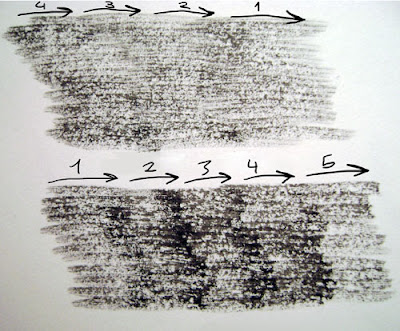 Drybrush almost seems like a cheat, because it lends and drawing a kind of automatic motion and atmosphere. Look at these 20 second doodles I did to prove this point:
Drybrush almost seems like a cheat, because it lends and drawing a kind of automatic motion and atmosphere. Look at these 20 second doodles I did to prove this point: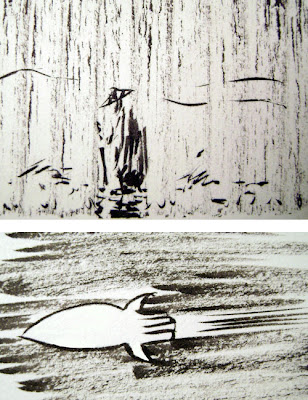 Wish almost no work at all the marks of the drybrushing itself makes the art seem alive and tangible. The rain feels thick and wet, the rocket seems to be speeding while in place.
Wish almost no work at all the marks of the drybrushing itself makes the art seem alive and tangible. The rain feels thick and wet, the rocket seems to be speeding while in place.





















 Yes, at long last, COMIC BOOK COMICS #3 is going to the printer. While you breathlessly wait for January 28 to roll around and the issue arrives at the LCS, check out the
Yes, at long last, COMIC BOOK COMICS #3 is going to the printer. While you breathlessly wait for January 28 to roll around and the issue arrives at the LCS, check out the 


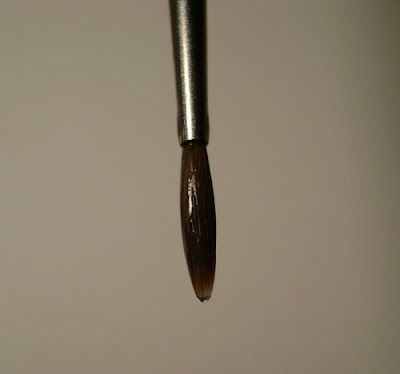

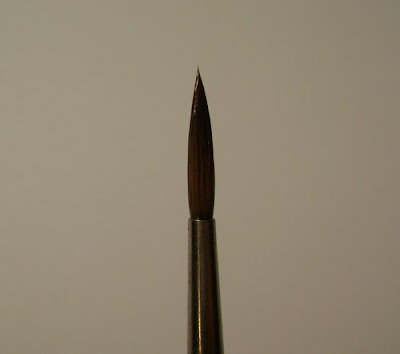
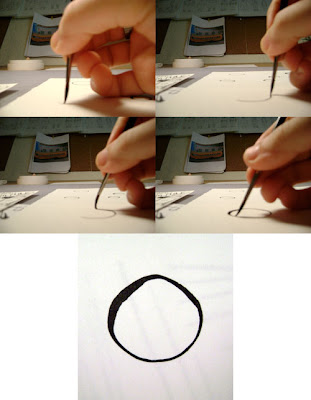
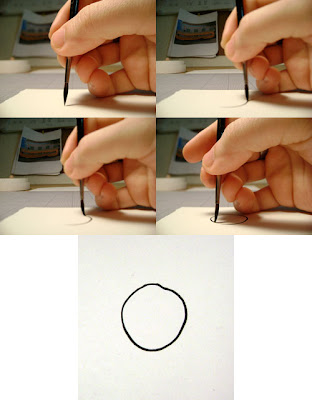
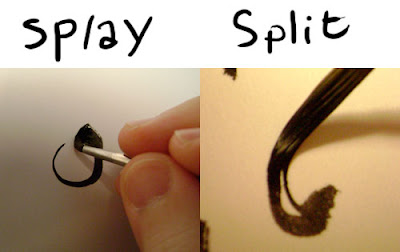
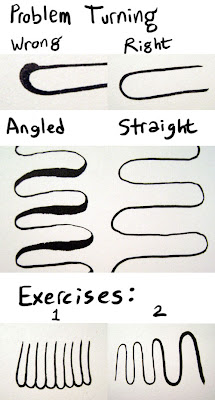



 Ryan is far too modest to brag about this himself, but Fred is a shameless whore.
Ryan is far too modest to brag about this himself, but Fred is a shameless whore.